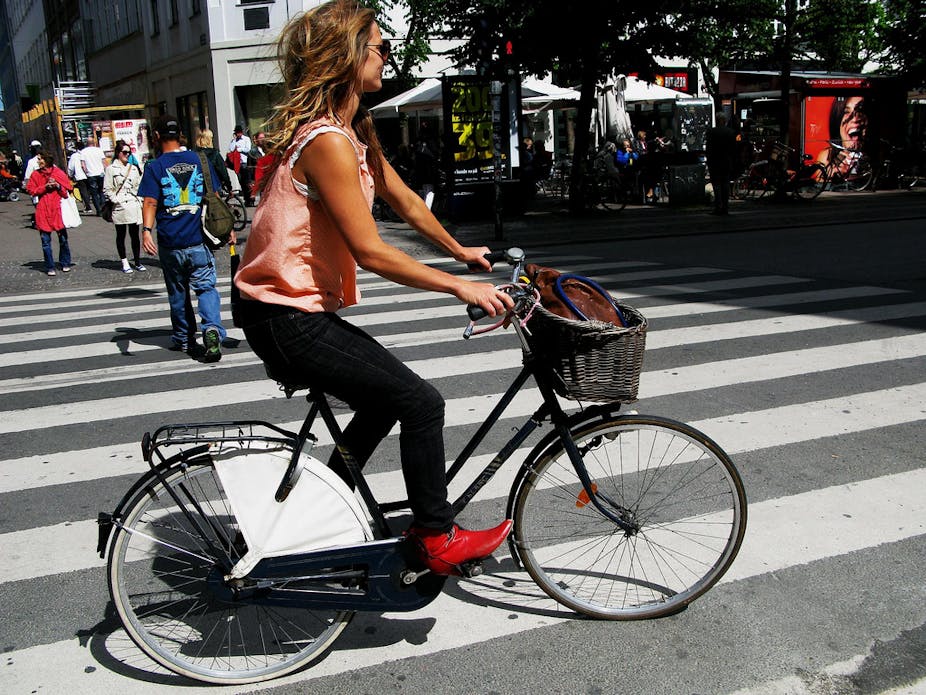CYCLING IN AUSTRALIA: There are many reasons cycling should be actively encouraged in our cities: increasing fuel prices, obesity levels and environmental concerns, just to name a few.
Yet in comparison to many European and Asian cities, cycling culture in Australian cities – Sydney in particular – remains decidedly underdeveloped and under-motivated.
The last Australian census revealed that 44,511 people in Sydney, 67,985 people in Brisbane, and 70,000 people in Melbourne cycle daily.
Of these, 6,246 Sydney cyclists ride to work (0.78% of city population), compared with 10,177 in Melbourne (1.11%) and 7,274 in Brisbane (1.6%).
These figures show that, in comparison to other cities in Australia, Sydney is lagging behind.
But it gets worse. In comparison with other cities around the world with similar metropolitan-area-population, Sydney has one of the highest cyclist death rates.

But it’s getting better, right?
So what is being done to make Sydney a more cycling-friendly city?
Well, in the past four years, the local government has rolled out new bike lanes, including some that segregate and physically disconnect cyclists from roadways.
In the context of major roads, segregated cycle lanes are a welcome necessity. But is this the correct approach for the smaller streets and quieter traffic of Sydney’s inner suburbs?
Segregation of bike lanes from roadways removes cyclists from the social and commercial domains of footpaths and building frontages. City designers and cyclists alike may argue that keeping cars away from bikes fosters cyclist safety, but do separated bike lanes foster what is really needed: a proper cycling culture?
In a way, segregated bike lanes further exacerbate long-term safety issues. They enforce the idea that the motor vehicle comes first. This can reduce the mutual awareness and responsibility of drivers, cyclists and pedestrians when encountering one another.
What can we learn from real cycling cities?
Designated cycling lanes are not features of cycling-established cities such as Tokyo, Amsterdam, Barcelona, Copenhagen and Paris, nor do these cities enforce bicycle helmet laws.
Yet in these cities, cycling is an accepted and respected form of personal travel. It promotes a greater awareness of the city, its fabric and layout. And it encourages social interaction.
Current legislation in NSW (and other states) prevents cyclists over 12 years of age riding on the footpath unless accompanying a minor on a bike. In Copenhagen, riding on footpaths is allowed, and wider footpaths, lower speed limits for vehicles and landscape zoning encourage shared zones.

In 2007, a team led by world-expert Danish architect, Professor Jan Gehl, conducted the Public Spaces and Public Life survey for Sydney.
At the time, Professor Gehl said: “Sydney has excellent natural conditions for developing a strong cycle culture since the climate and topography does not provide too many difficulties.”
Undulating topography (lots of hills) is often blamed for discouraging many would-be riders in Sydney. Yet in San Francisco – a far hillier city – cycling is abundant.
This could be due to recently completed bike infrastructure projects, but is also likely to be the result of a celebration of cycling culture promoted through a series of city events.
In the Good Cities for Bicycling study, Professor Jan Gehl suggested “Sydney should take San Francisco as a precedent to work its way into a better way of living”.
We need more than just bike lanes
Developing and fostering a healthy cycling culture is not simply about encouraging more people to cycle, or introducing more cycling infrastructure.
Behaviours and attitudes also have to change; among cyclists, pedestrians and motorists, and also among those that contribute to city planning.
Cycling needs to be perceived as a viable way to get around, as it is in so many European and Asian cities. But it should also be seen as an activity that allows more spontaneous explorations of the city and the opportunity to experience the city in a more intense and rich way.
Read the rest of the Cycling in Australia series.
Further reading:
- Public Spaces/Public Life/SYDNEY, by Jan Gehl.
- The Rise of Bike Culture: The streets of San Francisco aren’t just for cars anymore, by Steven T. Jones.
- No excuse Zone and Cycle City by Damien Pericles
- Cycling in Melbourne – Ownership, Use and Demographics by VicRoads

